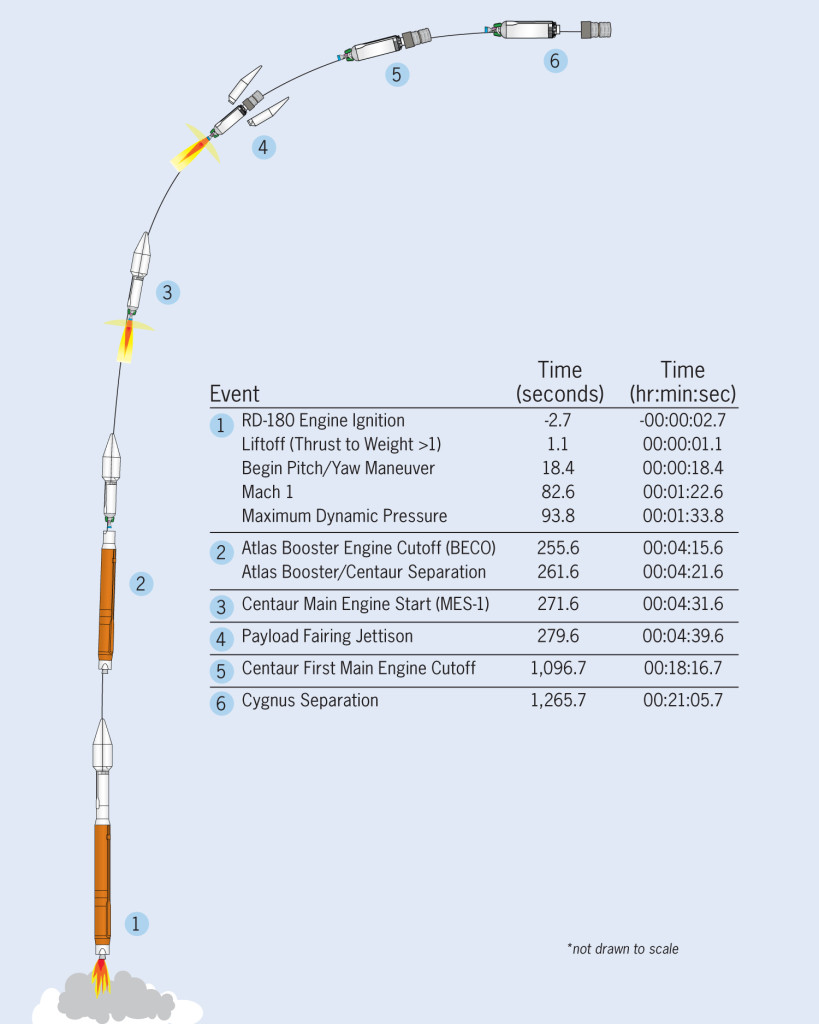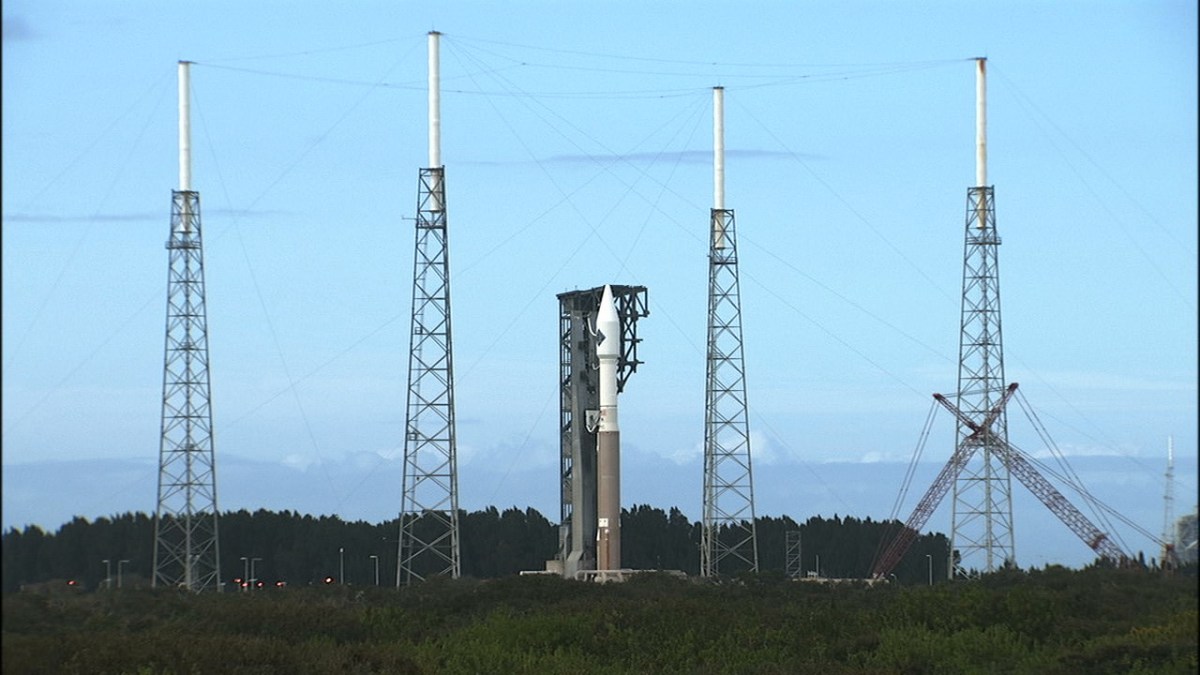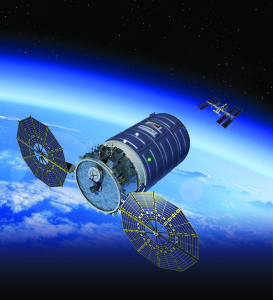 The Cygnus spacecraft is switching to its on-board batteries for electrical power through the rest of the countdown and launch into space. Once in orbit, the enhanced Cygnus will unfurl a pair of circular solar arrays that will recharge the spacecraft’s systems.
The Cygnus spacecraft is switching to its on-board batteries for electrical power through the rest of the countdown and launch into space. Once in orbit, the enhanced Cygnus will unfurl a pair of circular solar arrays that will recharge the spacecraft’s systems.
Category: Orbital ATK
Meteorologists Watching Cape Winds
The weather board is green right now but forecasters are watching out for gusting winds so the forecast conditions remain 40 percent chance of ‘go’ at launch time, Clay Finn, launch weather officer for the Air Force’s 45th Weather Squadron, advised the launch teams. The countdown is moving toward a 5:33 p.m. EST liftoff.
Countdown Enters Planned Hold
With the countdown at T-4 minutes, the clock has paused for 30 minutes. The weather briefing is coming up in a few minutes. Forecast remains 40 percent ‘go.’
First Flight of Enhanced Cygnus
 The Cygnus flying today is a larger version than previous versions Orbital ATK built. This one carries 25 percent more mass and is more than 20 feet long. It is taking 7,383 pounds of supplies such as food and clothing, along with scientific equipment and other gear for different aspects of spaceflight to the International Space Station during this mission. Here’s a look at what is to take place as the uncrewed Cygnus flies itself to the station where the astronauts there will grab it and connect it to the orbiting laboratory.
The Cygnus flying today is a larger version than previous versions Orbital ATK built. This one carries 25 percent more mass and is more than 20 feet long. It is taking 7,383 pounds of supplies such as food and clothing, along with scientific equipment and other gear for different aspects of spaceflight to the International Space Station during this mission. Here’s a look at what is to take place as the uncrewed Cygnus flies itself to the station where the astronauts there will grab it and connect it to the orbiting laboratory.
The Power of Research, Cubed
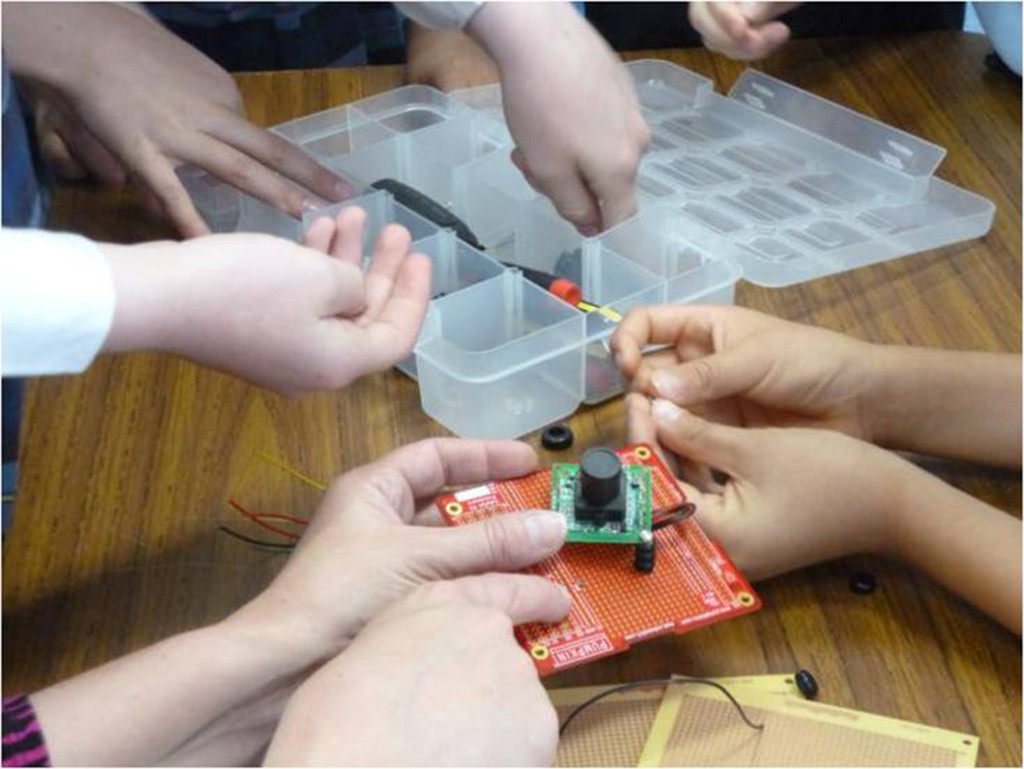 The payloads inside Cygnus include several CubeSats, which are miniature spacecraft that fill a standardized frame about 4-inches by 4-inches by 4-inches. The satellites are developed at a much lower cost than full-size spacecraft and allow innovations on several levels along with granting opportunities for practical, hands-on experience for students and others.
The payloads inside Cygnus include several CubeSats, which are miniature spacecraft that fill a standardized frame about 4-inches by 4-inches by 4-inches. The satellites are developed at a much lower cost than full-size spacecraft and allow innovations on several levels along with granting opportunities for practical, hands-on experience for students and others.
Deploying from the space station, the CubeSats will conduct independent, focused missions ranging from technological confirmation to relaying data from space to teams waiting anxiously on Earth. Among those teams is a group of students and teachers from St. Thomas More Cathedral School. With this launch, the group will become the first elementary school to put a CubeSat into orbit. The school worked with NASA’s ELaNa project, part of the agency’s Launch Services Program based here at Kennedy, to build and launch the STMSat-1. Read the details at www.nasa.gov/feature/elana-IX.
Countdown and Launch Events Today
4:59 p.m. Begin 30-minute hold at T-4 Minutes
5:03 p.m. Weather Briefing
5:26 p.m. Status check to continue countdown
5:29:11 p.m. T-4 Minutes and counting
5:33:08 p.m. RD-180 engine ignition
5:33:11 p.m. Launch
5:33:29 p.m. Begin pitch/yaw/roll maneuver
5:34:33 p.m. Mach 1
5:34:44 p.m. Maximum Dynamic Pressure
5:37:26 p.m. Atlas booster engine cutoff (BECO)
5:37:32 p.m. Atlas booster/Centaur separation
5:37:42 p.m. Centaur first main engine start (MES1)
5:37:50 p.m. Payload Fairing jettison
5:51:27 p.m. Centaur first main engine cutoff (MECO1)
5:54:16 p.m. Cygnus spacecraft separation
~6:33 p.m. Cygnus solar array deploy
~7:30 p.m. Post-Launch News Conference on NASA Television
Atlas V Propellants Loaded
The cryogenic propellant tanks on the United Launch Alliance Atlas V booster stage and Centaur upper stage are loaded now as we move toward a liftoff time of 5:33 p.m. EST from Cape Canaveral Air Force Station in Florida, adjacent to NASA’s Kennedy Space Center. Pumps have slowed to “topping mode.” The booster’s RD-180 engine uses RP-1 fuel and liquid oxygen to generate about 933,000 pounds of thrust. The Centaur stage burns liquid hydrogen and liquid oxygen to place the Orbital ATK enhanced Cygnus spacecraft and its 7,383 pounds of cargo into its initial orbit to get to the International Space Station. The launch window is 30 minutes today.
You Are Looking Live . . .
. . . at Space Launch Complex 41 where a United Launch Alliance Atlas V stands ready to send a cargo-laden Cygnus spacecraft built by Orbital ATK into orbit later this afternoon. As with yesterday, the weather is garnering a large share of attention as we move toward our scheduled launch time of 5:33 p.m. EST. The forecast stands at a 40 percent chance of acceptable conditions today.The launch team has a 30-minute window today to begin the mission that will see more than 7,300 pounds of equipment and supplies to the International Space Station.
As our continuous countdown coverage gets under way here and on NASA TV, look for up-to-date information about the countdown, launch and ascent into space along with background information about what makes this mission important and how the science being conducted off the Earth will advance life on the Earth, as well as prepare the way for future crews making an eventual journey to Mars.
Currently at the Launch Pad
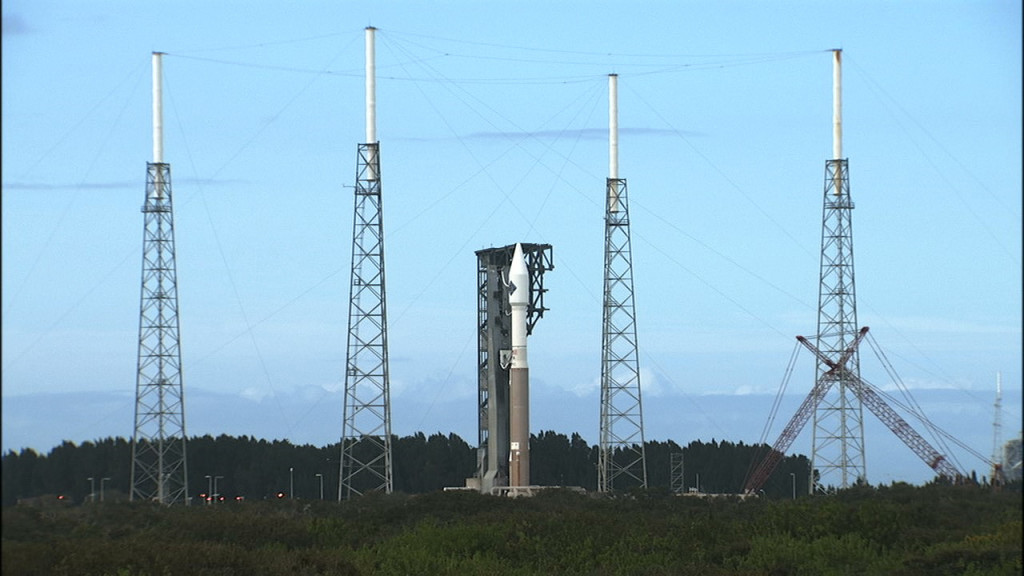 These are current looks at Space Launch Complex 41 where a United Launch Alliance Atlas V rocket and Orbital ATK Cygnus spacecraft stand in preparation for liftoff later today. Liftoff remains on schedule for 5:33 p.m. EST and the forecast still calls for a 40 percent chance of acceptable conditions. Today’s launch window will extend 30 minutes. Join us here and on NASA TV at 4:30 p.m. EST for countdown and launch coverage of the mission to deliver scientific gear, equipment and supplies to the International Space Station.
These are current looks at Space Launch Complex 41 where a United Launch Alliance Atlas V rocket and Orbital ATK Cygnus spacecraft stand in preparation for liftoff later today. Liftoff remains on schedule for 5:33 p.m. EST and the forecast still calls for a 40 percent chance of acceptable conditions. Today’s launch window will extend 30 minutes. Join us here and on NASA TV at 4:30 p.m. EST for countdown and launch coverage of the mission to deliver scientific gear, equipment and supplies to the International Space Station.
Forecast Upgraded to 40 Percent ‘Go’
Air Force meteorologists offered an improved weather forecast for Friday’s launch of the Orbital ATK CRS-4 resupply mission to the International Space Station. The likelihood of acceptable conditions has grown to 40 percent for launch time at 5:33 p.m. EST, the start of a 30-minute window. Our continuous countdown and launch coverage of the cargo-laden Cygnus spacecraft atop an Atlas V rocket will begin at 4:30 p.m. on this blog and on NASA TV, which can be linked from here or streamed at www.nasa.gov/ntv

